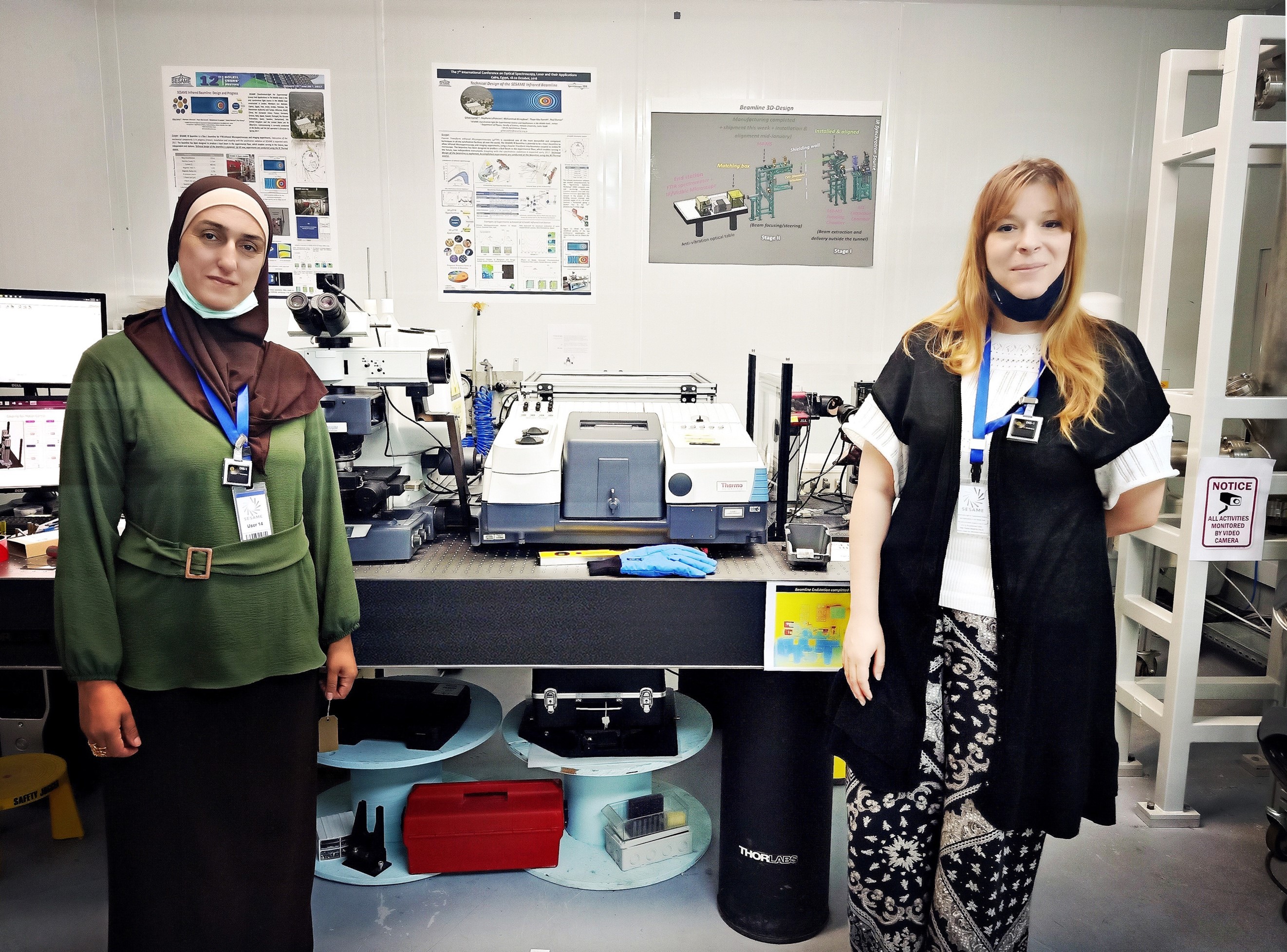
This week at SESAME is not just "another week", it marks another opportunity and a new beginning. After a few months of isolation, and with all safety measures carefully in place, SESAME reopens its doors and welcomes the first users on-site after the COVID-19 lockdown. The kick-off experiment in a series of planned activities will be conducted at the IR (Infrared) spectromicroscopy beamline. It aims to highlight the importance of infrared synchrotron light applications in developing current knowledge of the transdermal drug absorption.
"The transdermal route now ranks with oral treatments as the most successful innovative research area in drug delivery. This research is expected to have a crucial influence on the development of the methods used to assess drug diffusion behavior through the skin", says Randa Mansour, the Principal Investigator from Philadelphia University in Jordan.
"Due to its applicability to a large variety of wide-range biological systems, FT-IR spectroscopy is gaining increasing popularity as a spectroscopic technique. The planned experiment is a further insight on the effectiveness of IR microspectroscopic analysis in such biomedical applications as the formulation of drug delivery complex systems", says Gihan Kamel, the IR Beamline Principal Scientist.
The latest publication resulting from work at SESAME’s IR beamline was also related to biomedicine. It tackled one of the most debated issues in this discipline, namely Alzheimer's disease. The research titled "Synchrotron Fourier transform infrared microspectroscopy (sFTIRM) analysis of Al-induced Alzheimer's disease in rat brain cortical tissue" was published in Spectrochimica Acta Part A: Molecular and Biomolecular Spectroscopy Journal on May 5, 2020.

